8 best credit cards for air miles in the UK
Frequent flyer? Read our guide to the best credit cards for air miles in the UK, including cards from Amex, Barclays and Virgin Money.
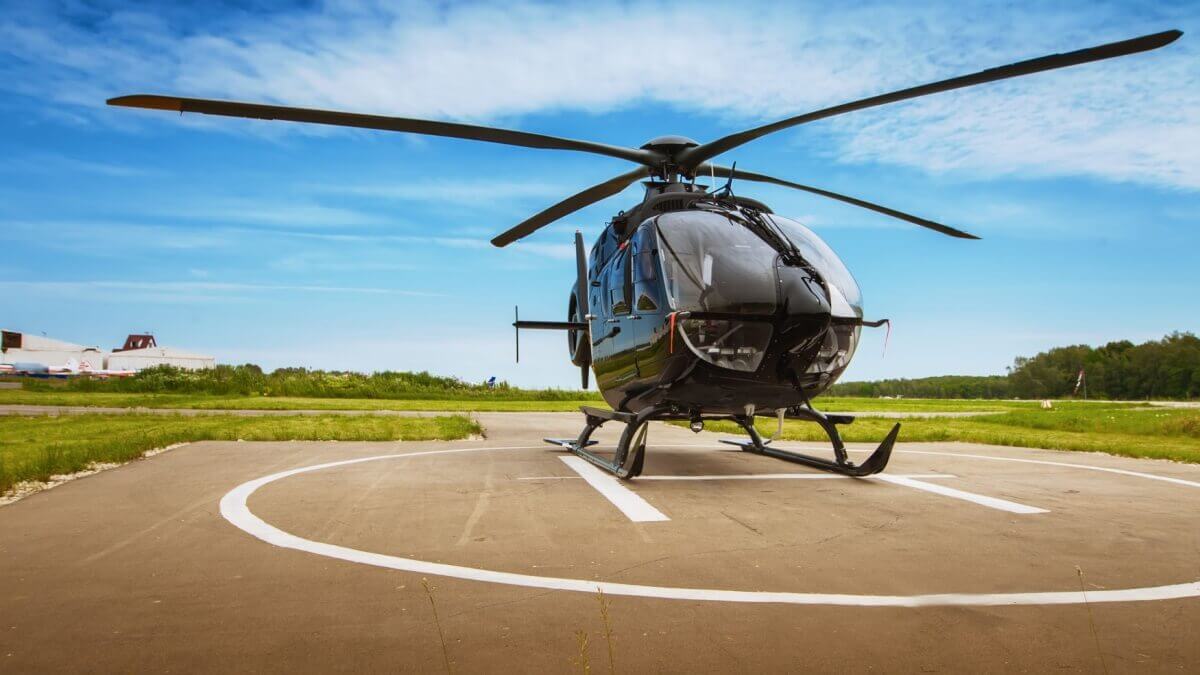
Are you looking to get your helicopter pilot licence in the UK? It may be a passion of yours to become a professional pilot. Or, you want to enjoy the freedom of the open skies for your own pleasure. Whichever the case, becoming a helicopter pilot is uniquely exciting.
Unlike aeroplanes, helicopters can land in hard-to-reach and remote locations. This makes them perfect for tourism, rescue, and transportation. Here’s how you can get your helicopter pilot licence in the UK.
And, if you find yourself flying your helicopter abroad, consider checking out the Wise account from the money services provider Wise. It lets you send and spend in 40+ currencies, converting your pounds using the fair mid-market exchange rate and only adding a small, transparent currency conversion fee.
There are a few different helicopter licence types you can get in the UK. We’ll break them down in detail in a minute. In order to decide what type of licence you want to pursue, there are two main things you need to consider:
If you’re looking to fly for leisure, you’ll need to apply for one type of licence. These would be the PPL (H) and LAPL (H) licences in the UK.
But, if you’re planning to make a salary from flying a helicopter, you’ll need to get a CPL (H) or APTL (H) licence.
As for where you’ll be flying your helicopter, it’s easy enough if your plan is to fly a UK-registered aircraft in the UK airspace. But if you want to fly in Europe or other countries, you’ll need different licences.
To fly a helicopter in Europe you’ll need a licence issued by the European Aviation Safety Authority (EASA). You will also need to have the right to work in the EU to work in Europe.¹ Bristol Groundschool is one flight school where you can get an EASA-approved APTL (H) licence, for example.²
And, to fly in international airspace you’ll need a licence certified by International Civil Aviation Organisation (ICAO).
If you already have an existing EASA or ICAO licence, the CAA says you can fly in the UK only for leisure.
The rules can be a bit complicated, so make sure you get in touch with the Civil Aviation Authority (CAA) directly.
Your other option is to convert your existing EASA or ICAO licence to one of the following UK licences. ³
If you’re looking to explore the skies as a leisure and even take your friends or family with you, PPL (H) is probably the right licence to choose.
There’s a small exception that does let PPL (H) holders earn money, though.
Pilots with a PPL (H) licence who also hold instructor or examiner credentials can be paid as flight instructors or for carrying out tests or checks.⁴
The LAPL (H) is an alternative to the PPL (H). Medical and training requirements aren’t as strict as with a PPL (H) licence. However, if you do plan to move on to commercial flying later on, it could be better to start with PPL (H) instead.
With the LAPL (H) you can fly with up to 3 passengers in helicopters with up to 2,000kg maximum take-off weight.⁵
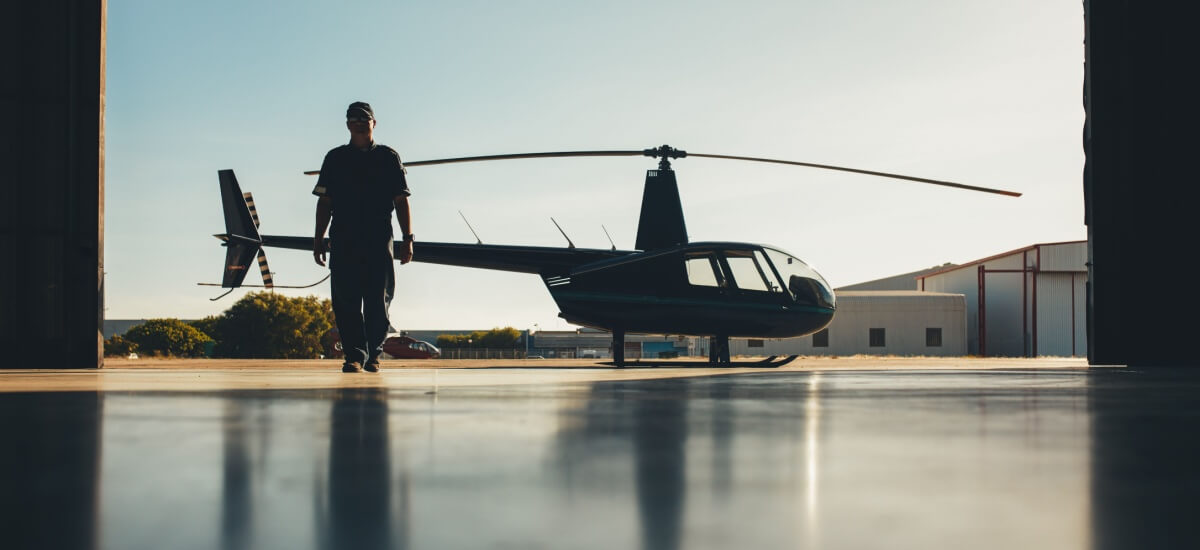
This is the helicopter pilot licence to get if your goal is to get paid for soaring in the skies. With a CPL licence, you can work as an ambulance services pilot or by giving aerial tours to people, for example.
But, if you’re looking to pilot the largest helicopters, you’ll need to reach the next level.⁶
This is the ‘final level’ of helicopter licences. The ATPL helicopter pilot licence will let you fly the larger helicopters used for transport.⁷
A special mention. Pilots who want to work towards getting their APTL licence can get a CPL licence with instrument rating (IR) beforehand. This lets you fly as a co-pilot on helicopters in commercial air transport and you’ll still be able to act as pilot in command on smaller helicopters.⁸
You can also get different ratings to add to your licence, like with the CPL/IR licence mentioned earlier. These ratings are required to fly different types of aircraft or for example, to fly at night.
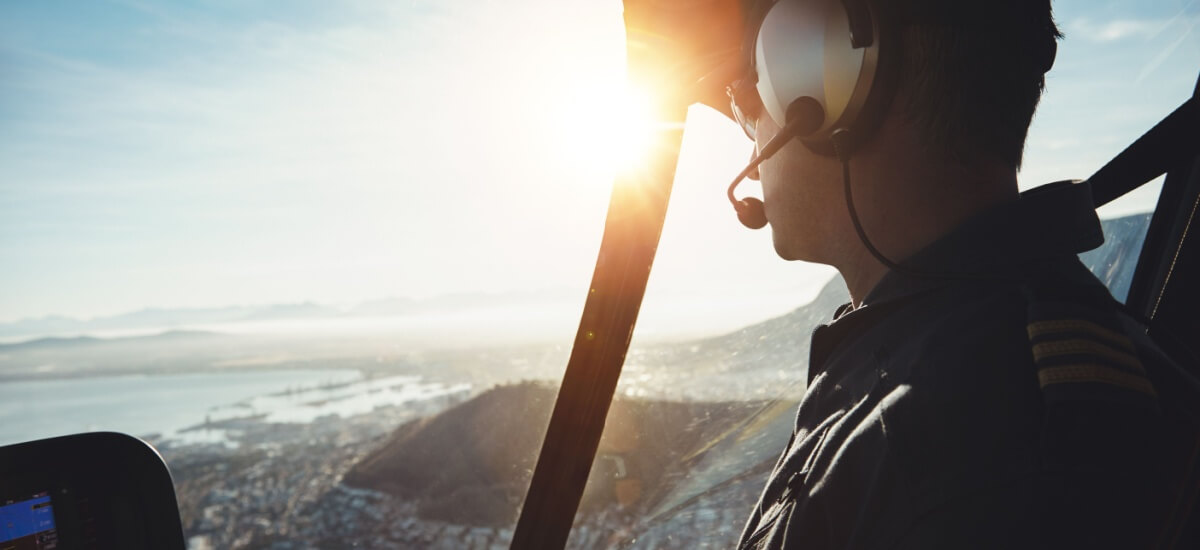
The requirements and qualifications to get a helicopter licence will be different based on the licence you’re trying to get. A word of advice: it pays to always be up-to-date with all the latest regulations and rules, as they change from time to time.
Here are the qualifications and helicopter licence requirements you need for PPL, LAPL, CPL, and ATPL helicopter licences:
Minimum age: 17
Medical certificate: UK Part-Med Class 2 medical certificate.
Training requirements: Completed training course at an Approved Training Organisation (ATO) or Declared Training Organisation (DTO).
Theoretical exams: Completed theoretical exams.
Flight training: Minimum of 45h.
Skill test: Flight test with an examiner.
Minimum age: 17
Medical certificate: UK Part-Med LAPL medical certificate.
Training requirements: Completed training course at an Approved Training Organisation (ATO) or Declared Training Organisation (DTO).
Theoretical exams: Completed theoretical exams.
Flight training: Minimum of 40h.
Skill test: Flight test with an examiner.
Minimum age: 18
Medical certificate: UK Part-Med Class 1 medical certificate.
Training requirements: Training requirements are different based on the category of the aircraft you’ll be flying.
Additional requirements: You’ll also need to also meet any special requirements for the class or type rating of the aircraft used in the skill test.
Theoretical training: 650 hours of theoretical knowledge training, plus at least 20 hours for Multi-Crew Cooperation (MCC).
Theoretical exams: Completed theoretical exams.
Flight training: Minimum of 150h.
Skill test: Flight test with an examiner.
Minimum age: 21
Medical certificate: UK Part-Med Class 1 medical certificate.
Previous qualifications: You will need to already hold a CPL (H) and a multi-pilot helicopter type rating and have received instruction in multi-crew co-operation (MCC).
Training requirements: Training requirements are different based on the category of the aircraft you’ll be flying.
Additional requirements: You’ll need to also meet any special requirements for the class or type rating of the aircraft used in the skill test.
Theoretical exams: When you apply for your ATPL, you must have previously passed the ATPL theoretical exams, likely as a part of getting your CPL (H).
Flight training: minimum of 1,000h.
Skill test: Flight test with an examiner.
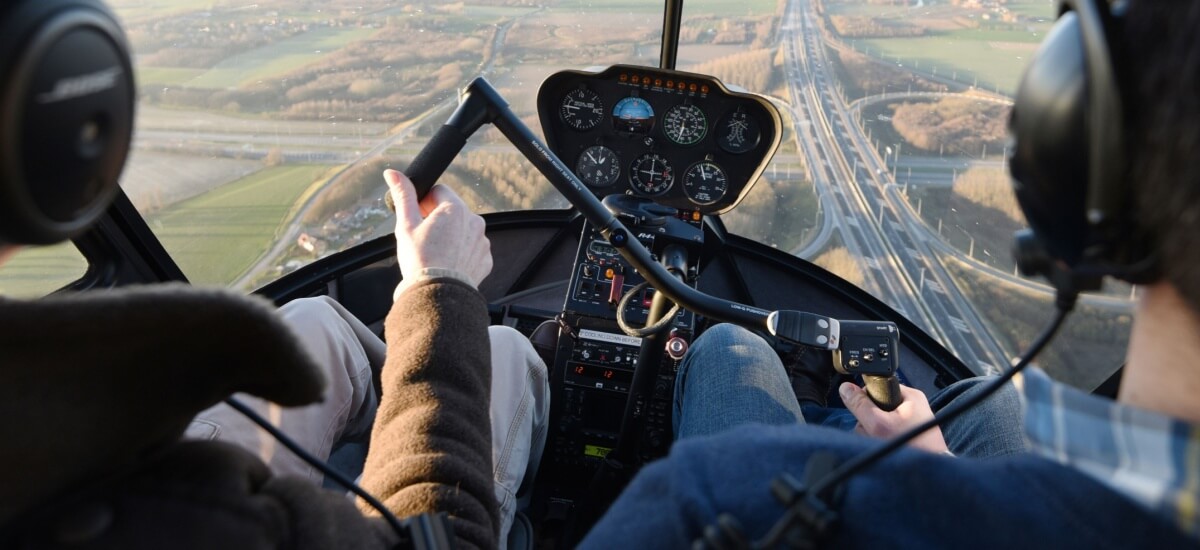
If you don’t already hold a licence, it’s good to know how to go about it. Here’s a short step-by-step guide to getting your first helicopter licence (PPL or LAPL) after you’ve chosen your flight school.
Getting your PPL helicopter licence takes an average of 6–12 months. It all depends on how much time you have to dedicate to studying and flying. The required flight training minimum is 45 hours, but most people need closer to 60-90 hours.
Getting a CPL will take around 18-24 months after you have your PPL licence.
There are many flight training schools all over the country. It would be difficult to say which are the best helicopter licence schools in the UK. Our advice – make your choice depending on the type of licence you want to get and where you’re based. It’s a good idea to have a look at the Google reviews, do some research, and speak to the school directly to find the best choice for you.
Some popular flight schools in the UK are:
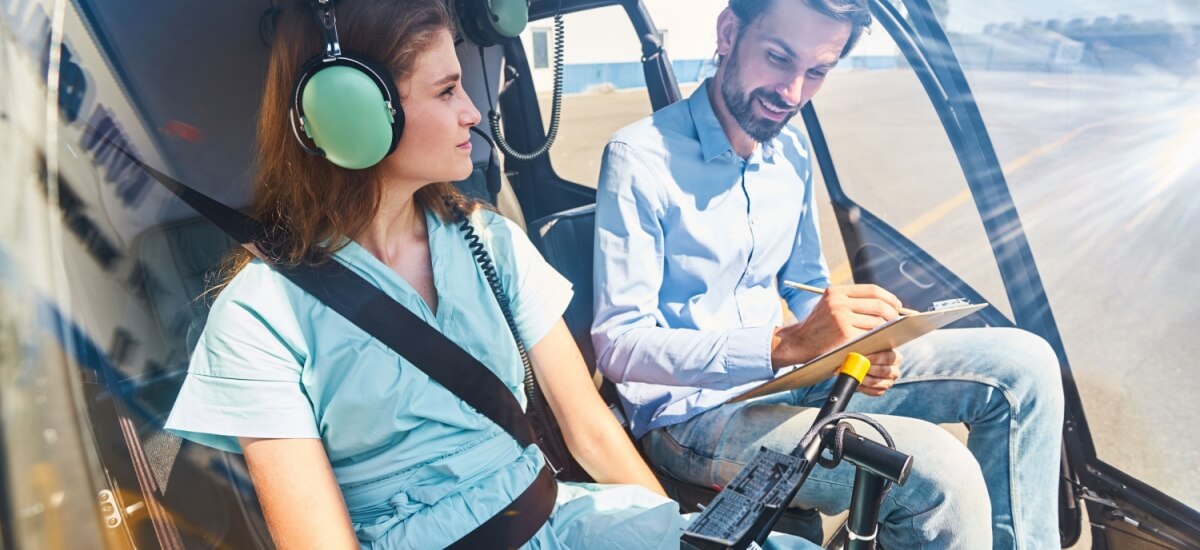
When it comes to helicopter licence cost, there are many variables that make up the price. From the amount of hours that you need for your flight training (the largest expense) to the type of aircraft you’ll be piloting, changes can add up to thousands of pounds in difference.
For example, if you’re getting a PPL (H) licence, flying an R22 will cost you £400 per hour, and flying a bigger R44 costs £600 per hour at Heliflight. Though, you can also get a small discount if you pre-pay 10 hours in advance.
Based on these example prices, you would pay £24,000 for 60 hours flying an R22. Flying the R44 would cost £36,000 for the same amount of time.
You’ll also need to pay for the following things to get your PPL (H):
One more cost to consider is the specialist equipment that pilots need.
Based on data from Flyer, getting a PPL can cost about £23,977 – £33,444 on average.⁹
The training to get a CPL(H) and ATPL(H) can cost around £50,000 to £100,000+ from start to finish.¹⁰
If you need to finance your helicopter pilot licence in currency other than the British pound, beware of the currency conversion and transfer costs. This is where Wise can help.
With the Wise account, you can manage your money securely in 40+ currencies. It’s not a bank account but offers many similar features.
You can send and convert money using the fair mid-market exchange rate and you’ll only pay a small currency conversion fee that you can see upfront. When sending money across borders, this could save you a ton.
What’s more, when travelling abroad, you can also get a Wise card to spend like a local, automatically converting your currency in 150+ countries worldwide.
Learn more about the Wise account 💰
Yes, there are scholarships available if you’re interested in pursuing a career in flying. Here are some of the flight schools we found online that offer scholarships:
Whether you’re thinking of getting your licence as a hobby or professionally, joining the ranks of helicopter pilots puts you in a small elite crew. You’ll be exploring the open skies, executing exciting manoeuvres that aren’t possible with airplanes… all the while enjoying the panoramic views you can only see from the cockpit of a helicopter.
Good luck with your adventure!
Sources used:
Sources last checked on date: 15-Mar-2024
*Please see terms of use and product availability for your region or visit Wise fees and pricing for the most up to date pricing and fee information.
This publication is provided for general information purposes and does not constitute legal, tax or other professional advice from Wise Payments Limited or its subsidiaries and its affiliates, and it is not intended as a substitute for obtaining advice from a financial advisor or any other professional.
We make no representations, warranties or guarantees, whether expressed or implied, that the content in the publication is accurate, complete or up to date.

Frequent flyer? Read our guide to the best credit cards for air miles in the UK, including cards from Amex, Barclays and Virgin Money.

Read our rundown of the best student travel credit cards in the UK right now, with cards from HSBC, TSB, Virgin Money and more.

Find out how to top up Revolut with a credit card here in our handy guide, covering everything you need to know.

Everything you need to know about how to withdraw money from a credit card, including potential costs, withdrawal limits and how it affects your credit score.

Wondering how do you get paid on Vinted? Read our guide to learn how the platform works, what you can sell and how you can start earning.

Check out our full comparison of Apple Pay vs Samsung Pay in the UK, to help you choose the right digital wallet for you.